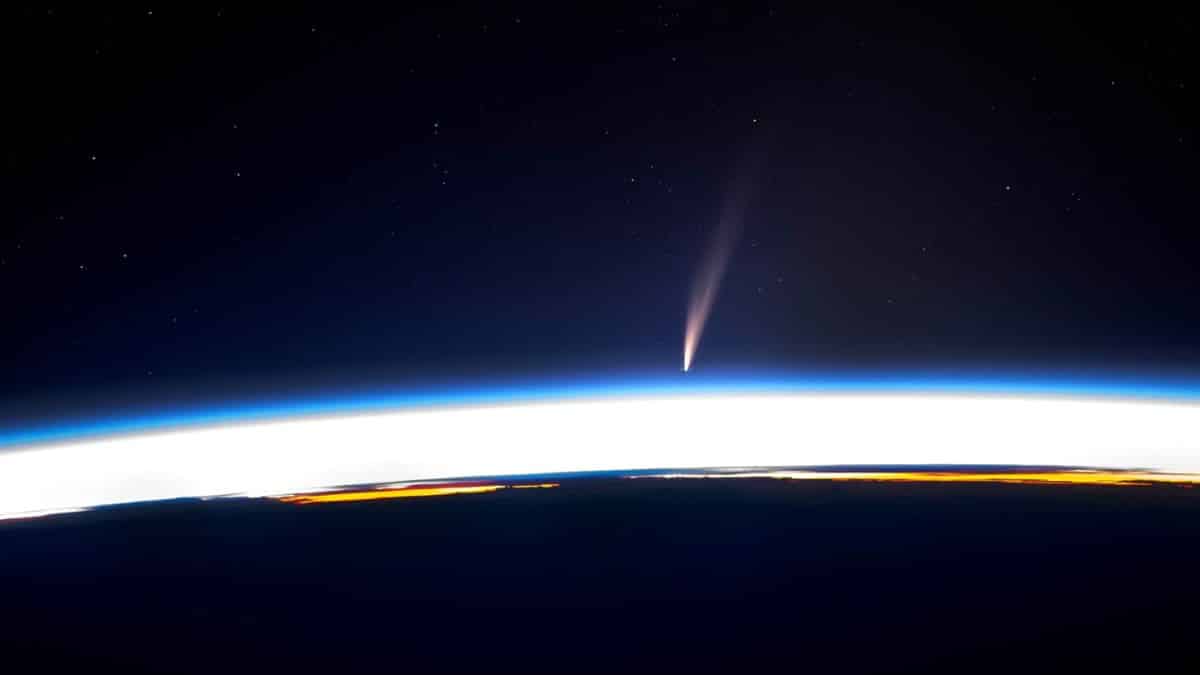The night sky will soon offer a spectacle unseen for 160,000 years as **comet C/2024 G3 (Atlas)** approaches our cosmic neighborhood. This extraordinary celestial visitor promises to be visible to the naked eye, creating excitement among both professional astronomers and casual stargazers worldwide.
Historic cosmic visitor approaching Earth
NASA’s asteroid impact alert system first identified **comet Atlas C2024-G3** last year, setting the astronomical community abuzz. This remarkable comet is currently racing toward its perihelion—the point in its orbit closest to the Sun—which will significantly enhance its brightness.
According to Dr. Shyam Balaji, an astroparticle physics and cosmology researcher at King’s College London, “Current orbital calculations show the comet will pass approximately 8.3 million kilometers from the Sun.” This close solar approach classifies Atlas among the rare sun-grazing comets that venture exceptionally near our star.
Astronaut Donald Pettit captured the growing anticipation perfectly when he shared on social media: “It’s truly incredible to see a comet from orbit. Atlas C2024-G3 is coming to visit us.” His excitement reflects the astronomical significance of this event—a comet potentially bright enough for Earth observers to see without telescopic assistance.
What makes this approach particularly special is its rarity. The comet’s orbital period spans approximately 160,000 years, meaning the last humans who might have witnessed its passage were early Homo sapiens during the Late Pleistocene era.
This cat’s reaction to meeting a baby for the first time is melting hearts online
Archaeologists make a surprising discovery while studying ancient Hittite tablets
Viewing opportunities and challenges for observers
While **comet Atlas** promises spectacular views, observing it presents certain challenges depending on your location. The Northern Hemisphere faces greater difficulty due to the comet’s position relative to the Sun. Countries like France will experience limited visibility because of the particular angle of the comet’s orbit.
Southern Hemisphere observers enjoy a significant advantage. Dr. Balaji recommends that those in southern locations should:
- Look toward the eastern horizon shortly before sunrise
- After perihelion, shift attention to the western horizon after sunset
- Find locations with minimal light pollution
- Consider using binoculars or small telescopes to enhance viewing
Local weather conditions and the comet’s unpredictable behavior will influence visibility. Patience and strategic timing will maximize your chances of witnessing this rare astronomical event.
At just 16, he’s been accepted by 185 universities and offered $9 million in scholarships
A Firefighter Finds a Baby Girl in a Safe Haven Box and Decides to Take Her In
Factors affecting comet visibility
Several key elements determine how bright and visible **comet Atlas** will appear from Earth. Understanding these factors helps set appropriate expectations for this celestial event.
| Factor | Impact on Visibility |
|---|---|
| Distance from Sun | Closer approach increases brightness dramatically |
| Comet composition | Higher ice/volatile content creates more impressive tails |
| Observer location | Southern Hemisphere offers optimal viewing angles |
| Light pollution | Rural areas away from cities provide better contrast |
NASA scientists note that predicting exact comet brightness remains challenging. Despite sophisticated modeling, comets occasionally underperform or dramatically exceed expectations. Some comets have historically disappointed after initial predictions of spectacular shows, while others have surprised observers with unexpected brilliance.
The **C/2024 G3 Atlas comet** presents a unique opportunity for astronomical observation and appreciation. Its 160,000-year orbital period means this visit represents a truly once-in-many-lifetimes event. Whether you’re an experienced astronomer or simply curious about celestial phenomena, this rare visitor from the outer solar system offers a connection to the vast cosmic cycles that typically unfold beyond human timescales.
As the comet approaches, astronomical societies worldwide are organizing viewing events and providing updated information on optimal observation times. This shared experience of witnessing such a rare astronomical event creates a special moment of cosmic perspective for our generation.







